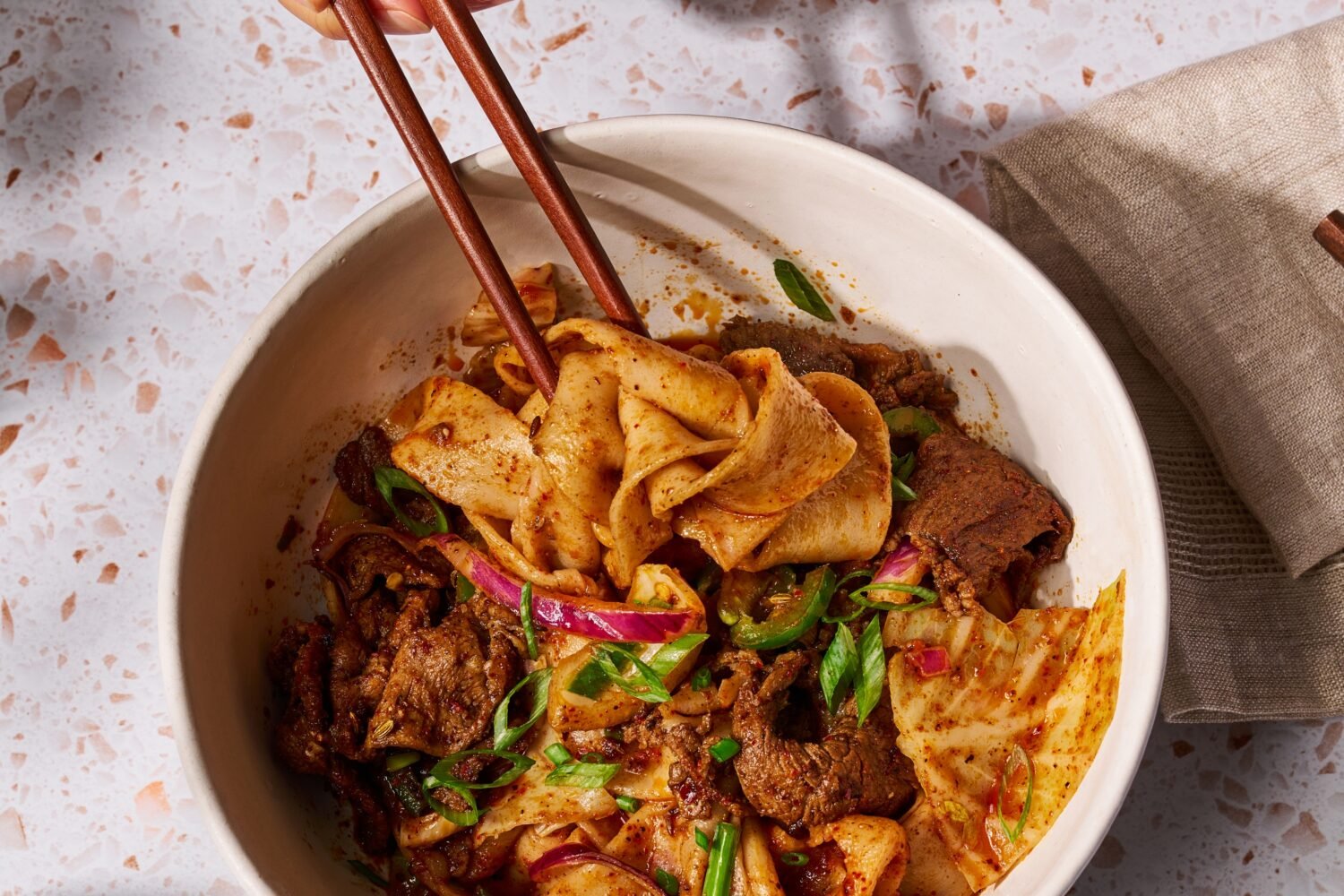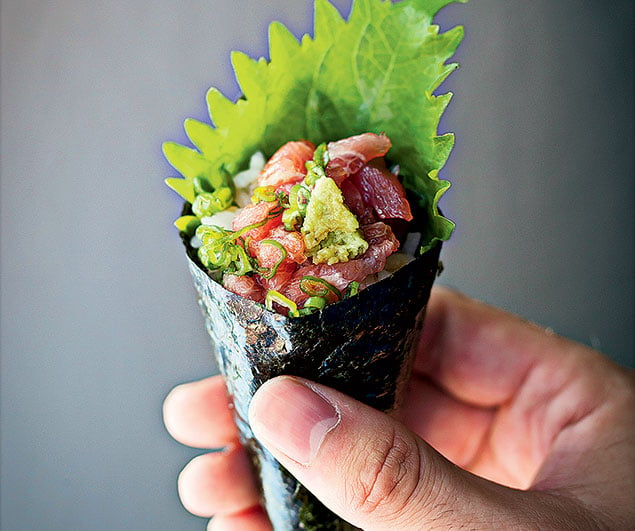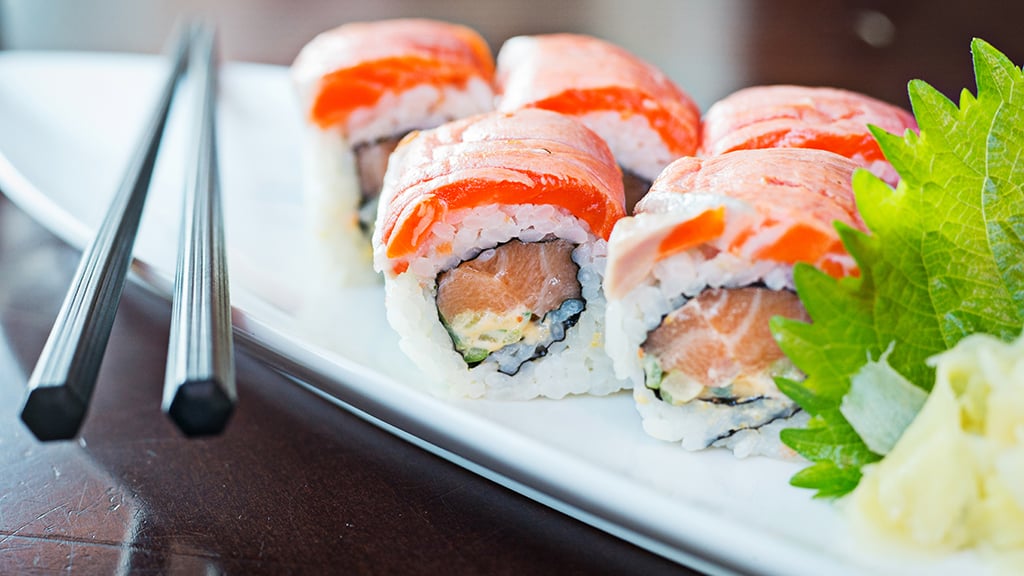About Sushi Capitol
The women to the right of me at the sushi bar did not dip their rolls in the soy sauce. They submerged them, in the manner of fingernails being prepped for a manicure.
The wasabi was next. Not a dab of the fresh grated horseradish—a spackling, as if to plaster over the fish.
I knew it was wrong to allow my barmates to color my judgment, but their flagrant defiance of sushi etiquette seemed to suggest that Sushi Capitol was probably not attracting the most discerning sushi lovers.
I sat back and studied the room as I sipped a Kirin. Exposed-brick walls, wood floors, pendant lights—attractive enough but far from the stylish appointments of a Sushi Taro or a Kushi, which, from the moment they opened, announced themselves as serious destinations for raw-fish fanciers. The seven tables on this night were taken up with young Hill staffers, and from their conversations it was clear they preferred cataloging the various misdeeds of their colleagues to drilling down into the details of their meal.
Here, it seemed, was a pleasant workaday sushi restaurant, the kind of place you drop in on a Tuesday night. Nothing special, and certainly nothing to justify my tipster’s bubbling-over enthusiasm.
Then the food arrived.
This was nigiri of subtle elegance, each slender slice of fish draped over its pad of rice like a napper flopping onto a chaise longue. Just as inviting: Each was sheened with moisture, evidence the fish hadn’t lingered too long at the dock or dawdled in transit.
It was time to eat with more than my eyes.
The language of sushi appreciation is curiously limited. We say that the fish was fresh, or of high quality. Both terms applied here. But just as important was that the balance of fish to rice was perfect, as if each ingredient had been weighed on a scale before assembly.
And let me reach for a word I don’t think I’ve ever used in conjunction with sushi: juicy. No one thinks it the least bit strange to describe a steak as juicy. But only a superlative preparation would come close to the juiciness of the salmon I sampled one night—striped with fat and so luscious it nearly dissolved on the tongue. The chu-toro, cut from the belly of the tuna, was even richer, with a sweet saline taste that even a long sip of sake couldn’t wash away—not that you’d want it to.
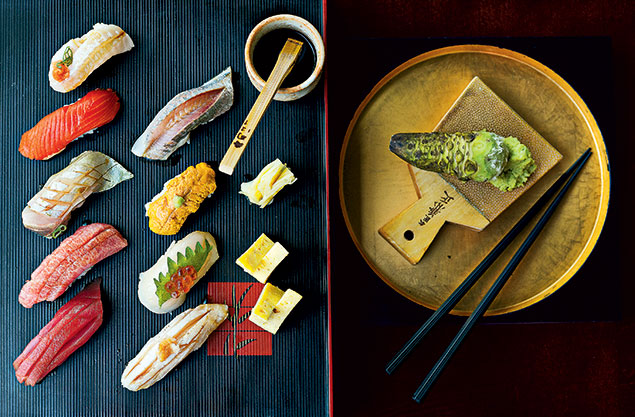
If anything, the white fishes were even more impressive. In Japan, sushi bars are often judged by the quality of their fluke and flounder. In the States, these fish are often so mild as to be without flavor. The madai here tastes like madai should, with a barely perceptible sweetness and an almost cartilaginous texture. The flounder, like al dente pasta, is both firm and slippery.
Not only are you made to appreciate the delicacy of these fish, but you’re also made to appreciate the function of white fishes in a meal of sushi. Too much richness and intensity and you lack balance. The white fishes restore balance and pace.
The presiding master is a man named Minoru Ogawa, who for nearly two decades worked at the Mandarin Oriental hotel, overseeing sushi operations at its properties along the East Coast. He opened Sushi Capitol with his wife last summer, hoping for a quieter existence. His ambitions may have narrowed, but to his credit—and our benefit—he hasn’t dumbed down his approach.
One night, awaiting a plate of sashimi, a friend and I snacked on a plate of cooked crabs, each no bigger than a walnut. We munched them like popcorn—claws, eyes, and all. Actually, they’re crunchier than popcorn. Sweeter, too. We ended that meal with two lobes of uni, or sea urchin, presented in their spiky shell. There’s nothing in the world like great uni—with its unctuous texture and bright, oceanic finish—and this was great uni. My friend closed her eyes as she ate, as if to focus more intently on the intensity of the taste. Even after she finished, they remained closed for several seconds.
Alas, both the tiny crabs and the uni are seasonal specialties. Too bad—but then again, part of the pleasure of eating delicacies like this is that they’re not always available. You have to bide your time and anticipate them.
One of the things that make Sushi Capitol so appealing, though, is that you don’t have to go for the strange stuff to have a memorable meal. The fish Ogawa uses for rolls is better than what most places use for nigiri. And the more complicated rolls are often dazzling.
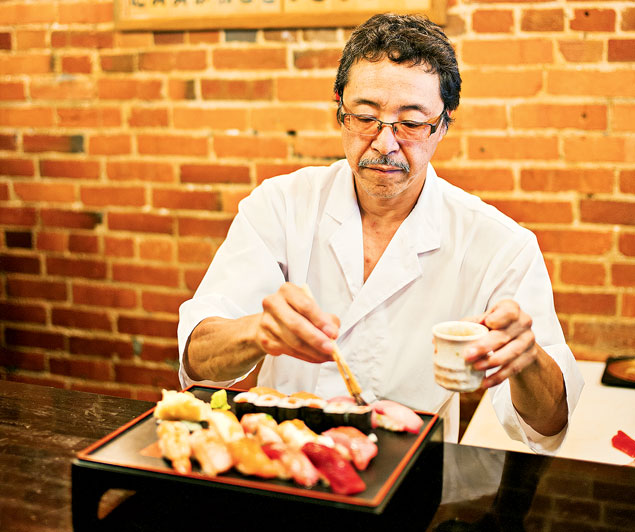
Lots of places serve some version of what Ogawa calls a Florida roll, with salmon, avocado, and green onion. Few renditions, however, look or taste like this. Fat with fish and festive in its alternating colors of green and orange, the roll is capped with a glossy strip of salmon belly and treated to the chef’s blowtorch. The heat chars the surface and lightly cooks it—in effect, giving you two preparations of fish in one.
My quibbles are few. Mackerel one night was mealy, a casualty of over-marination. Twice I ordered the house-made turkey shu mai, and twice the kitchen was out of them. And the rice, while fine, is not at the level of the fish. Ideally, you’d be able to distinguish each grain; here they sometimes clump.
Washington is not New York or San Francisco or LA. It’s never been a prime spot for raw fish. The scene is particularly depleted at the moment: Makoto is in decline, Kushi has tanked, and Sushiko is down to just a single restaurant. The undisputed king has been Sushi Taro. Sushi Capitol lacks Taro’s sense of occasion, but here’s what else it lacks: the hushed solemnity and exorbitant prices.
One night I sprang for the “chef omakase,” or tasting menu. Most of the time, omakase is too much of an investment of time and money in a journey I’m reluctant to take with a chef. But this is one of the cheaper omakase menus in the area—$50 for 13 to 17 pieces, a veritable deal. And, though simple in its progression, one of the better ones.
The omakase ended with a tuna handroll: inside, hand-chopped o-toro,thin-sliced green onion, and rice; outside, a cone of seaweed so crunchy it was audible.
“Dessert,” said the sushi chef who handed it to me across the counter, smiling.
Ogawa can go on pretending he’s opened a neighborhood spot, but he’s quietly built a powerhouse.
Find Todd Kliman on Twitter @toddkliman. This article appears in the August 2014 issue of Washingtonian.

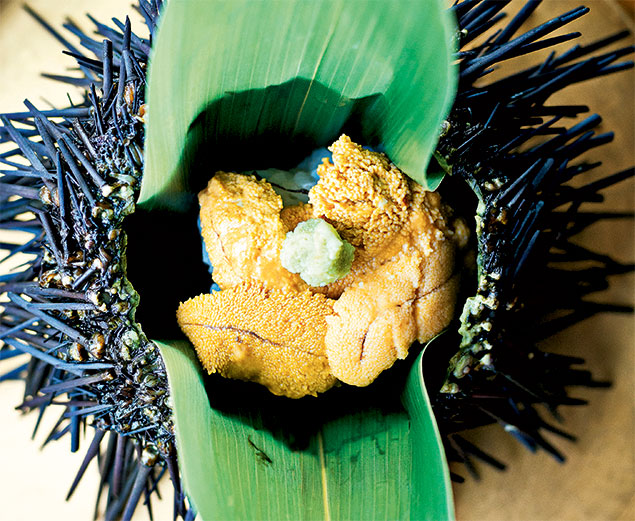
 100 Very Best 2015
100 Very Best 2015



